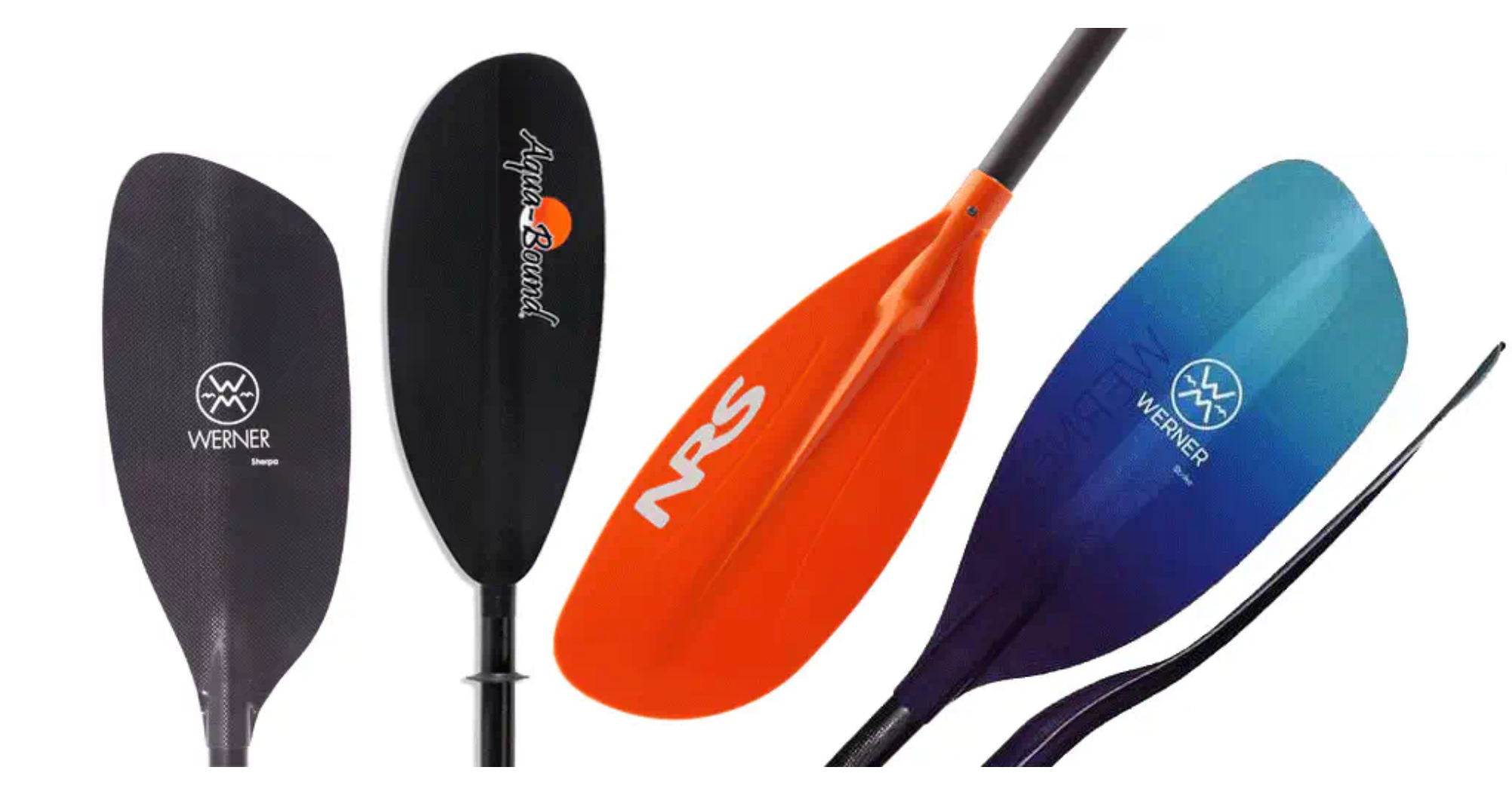When shopping for a high-quality whitewater kayak paddle , one of the biggest decisions you'll face is choosing between carbon and fiberglass paddles . Both materials offer distinct advantages in terms of performance, durability, and weight, but the right choice depends on your paddling style, budget, and personal preference.
Understanding the differences between carbon and fiberglass kayak paddles will help you maximize efficiency, power, and comfort on the water. Below, we break down the pros and cons of each material, how they impact paddle performance, and what to consider when making your decision.
Fiberglass
Pro: Strong, yet lightweight and more flexible.
Con: Fiberglass paddles tend to offer a little less power per stroke.
Fiberglass tends to be a light and dynamic material. A fiberglass shaft will give you a degree of “flex and rebound” with each stroke. On a high quality whitewater kayak shaft, like the shaft on the Werner Powerhouse Straight Shaft Kayak Paddle, you might not really notice the extent of flex unless you really load your paddle face, like when bracing hard in a high-brace position, for instance. It’s not necessarily a bad thing, it just means that the power transfer from your body to the water will be a little bit delayed, as fiberglass tends to load up like a bow when flexed, becoming more rigid as it flexes. It might not be something you really notice until you get over 200cm in shaft length.
Fiberglass acts as a shock absorber to some degree, and if you dip a blade in an eddy current it’s not quite as jarring on your shoulders as it can be with a carbon shaft. Since there is some flex by design, a fiberglass paddle shaft tends to be able to handle more abuse than a carbon shaft, and is best to use in low water, or technical rocky sections.
Carbon
Pro: Most powerful and lightweight choice. Great for whitewater kayaking.
Con: Most expensive option and less flexibility.
Carbon, conversely, is a fairly rigid, static material. Carbon on its own tends to be a bit heavier than Fiberglass, and is much more expensive. That said, much of the time that you are purchasing a kayaking paddle shaft with carbon, it’s actually a wrap of several layers of carbon fiber around a lighter weight core, so the overall paddle ends up being lighter than a full-fiberglass paddle.
Because carbon is rigid, power transmission from paddler to water is practically instantaneous, leading to very high performance, especially in racing paddles. Generally, a stiffer material is more resistant to deformation. Unfortunately, in carbon’s case, that means that it can be brittle when its strength is tested to its limit.
Carbon generally won’t bend when it reaches a certain point, it will break. Carbon paddles are therefore something that are meant for deep water and skilled paddlers who understand the advantages and disadvantages to having a carbon shaft. A paddle like the Powerhouse Carbon is known for maximizing stiffness and power transfer into the water.
Carbon Foam Core
Some carbon paddles have a lightweight foam core to improve buoyancy and reduce overall weight while still keeping the stiffness of a carbon paddle. Standard carbon is heavier but more durable and stiff. It's hard to compare the durability of fiberglass vs a standard carbon paddle, but fiberglass is rated to be more durable than foam core due to the lightweight construction of a foam core paddle. Werner Paddles with a foam core are extremely light, float high and have Dynel® edges. The paddle’s Dynel® edge reinforcement prevents wear on the edge (fiberglass and standard carbon don't have this). Edges on paddles without Dynel® edges slowly wear over time and lose surface area of the blade over the years from abrasion.



